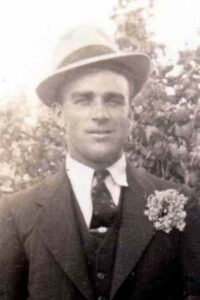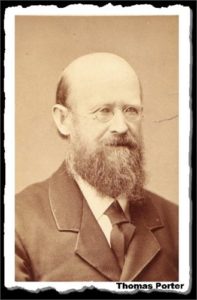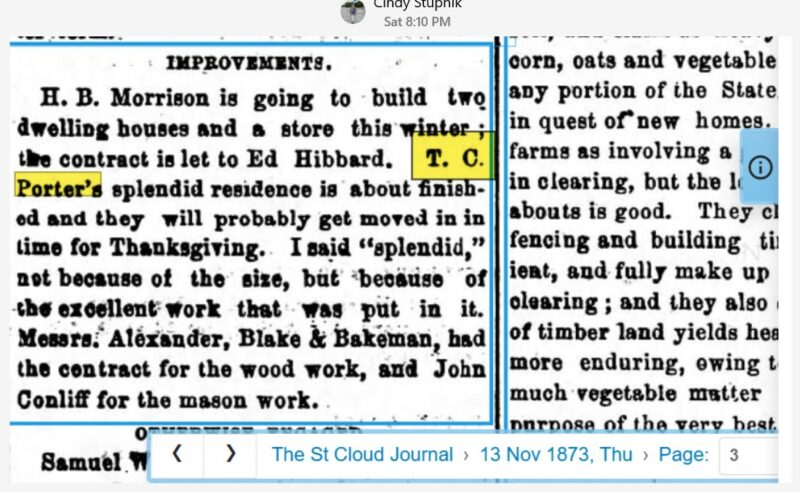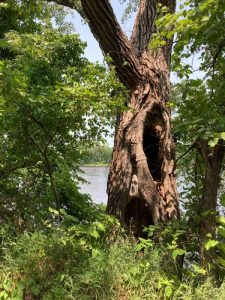“A change of seasons begins in the heart.” Cindy Stupnik
Changing is a constant if one is a writer. Change of topic, change of thought, change of address–even if it is only related to the thought process.
I said after I finished my last book, “Where Two Rivers Meet,” the third in my Minnesota Main Street Women’s series, I wanted to write some poetry and research my family again. I published my first book, “Steppes to Neu-Odessa,” back in 1996, as a love link to my dad, the late great Harold Frank , grandson of Germans who lived in Russia for a few generations before coming to America in the latter 19th century. I revised the first book and re-published it a few years later with updates my sister and I accessed via the Internet. Over the years and while delving into other writing projects, I kept wanting to get back to researching my dearly departed. In addition, I knew what I wanted to say about my fourth novel and who I wanted to write about. All of this takes research. It is what I love the most. For me, it is like taking a journey into lands I may or may not have previously traveled.
, grandson of Germans who lived in Russia for a few generations before coming to America in the latter 19th century. I revised the first book and re-published it a few years later with updates my sister and I accessed via the Internet. Over the years and while delving into other writing projects, I kept wanting to get back to researching my dearly departed. In addition, I knew what I wanted to say about my fourth novel and who I wanted to write about. All of this takes research. It is what I love the most. For me, it is like taking a journey into lands I may or may not have previously traveled.
Change–when–researching my ancestry is difficult–my brain has not spread its wings so broadly for a long time. Keeping dates and people straight (How many ways can one spell John? Johan, Johann, Johannes–as if the name stood alone without adding on Christian, George or Peter, and sometimes, the only way to know you might be close to the right ancestor is by looking at birth, baptism, marriage, or death dates, if they exist) is not as easy as it used to be. My brain isn’t as elastic as it used to be.
But I love the search for the prize–a hint, or if I am really lucky a black and white picture of that person whose curly hair I might have inherited or a weirdly squeezed together toenail that resembles an avian phalange that hasn’t quite evolved into a human toe yet. (I also have weird thumbs. One deceased relative actually drew hers on her letter to me to see how we compared.)
I’ve taken my challenge to write a poem, need to pen more, and have started researching my next gal for the Minnesota Main Street Women series. Here I will travel back for a while to the east coast–specifically to Connecticut and Massachusetts before working in the Minnesota area in the 1920s, 30s, or ?????
As I said before, change!!!! My books are showing up in the nicest places. I know that Buffalo Books & Coffee in Buffalo, Minnesota, is selling them —because I dropped off a number of copies. I will do a reading, selling, and signing there sometime soon. I am signing another contract with Paramount Center for the Arts in St Cloud on St. Germain where the gift store has been carrying my books for a few years. Clear Water Outfitting, downtown Clearwater, Minnesota, is carrying “Around Clearwater.” In January, I was told by the Stowe Historical Society in Vermont that they asked the Bear Paw Bookstore to carry my books because my “Where Two Rivers Meet,” included many people who moved from Vermont to Minnesota. And NOW, J’s Junction in Becker, Minnesota, at 14087 Bank Street will be carrying my Minnesota Main Street Women series. In fact, next Thursday, May 2nd, from 3-5:30, I will be selling and signing at their event “Wine & Sign.” Come see me, buy books and anything else they have in their wonderful shop.
More changes….
I have a few new events I’ll be showing up at in order to “SELL & SIGN” throughout the summer and year. A couple events I have decided not to attend.
One new event is Saturday, May 18, in Sartell, MN, at the new community center–more to come on that. So, I ‘ll announce my events before they happen with dates and times before they happen.
I’ve included a short biography, a listing of my books available for sale, a summary of each book, and the price. Please contact me if you’d like to buy one. I can send you prices for the book, the shipping, taxes, and final cost. cynthiafrankstupnik.com, cstupnik@outlook.com, and or through Facebook.









